Arrive Delhi by SQ-406 at 2020Hrs (tbc).
E-VISA . On arrival at Delhi airport, take the escalator into the immigration section, with all the giant hand mudras (traditional hand/dance gestures). Walk all the way down to the end to the booths that state "E-VISA" and that is where you will be processed.
After clearing immigration, you will be met by Mysteries of India’s representative and escorted to your hotel . Sachin, from Mysteries of India, will be waiting in the foyer of the Delhi International airport with a sign board . SACHIN Mobile: +91 9871704522
Delhi, the capital and the third largest city of India, is a fusion of ancient and modern. Standing at the western end of the Gangetic Plain, it is a vibrant city rich in culture, architecture, beautiful gardens and human diversity. Its rich history is reflected in magnificent monuments, in museums and in galleries. It comprises two contrasting yet harmonious parts, Old Delhi and New Delhi. Old Delhi was the capital of Muslim India from the 12th to the 19th centuries, while New Delhi was created by the British Raj and replaced Calcutta (Kolkata) as the capital in 1931. It is India’s main international gateway, and the travel hub of Northern India.
Check in the hotel and spend rest of the day at leisure (No vehicle for local use).
Overnight in Delhi



Full day city tour of Old and New Delhi.
The sightseeing of Old Delhi includes Jama Masjid, Chandni Chowk, Red Fort and Raj Ghat.
Jama Masjid: This great mosque is the largest in India, built by Shah Jahan between 1644 and 1658. With a courtyard capable of holding 25,000 devotees, the highly decorative mosque has three great gates, four towers and two 40 metre high minarets constructed of alternating strips of red sandstone and white marble.
Chandni Chowk: Chandni Chowk, the bustling oriental bazaar, is next to the Red Fort and Jama Masjid. It was built in 1650 by Shah Jahan’s favourite daughter, Jahanara Begum, as a complement to the imperial habitat, the Red Fort.
Red Fort: The red sandstone walls of the massive Red Fort (Lal Qila) stretch some two kilometres and rise to 33 metres above the clamour of Old Delhi. It was a fort and royal residence, and a striking reminder of the magnificent power of the Mughal emperors (closed on Mondays).
Raj Ghat: Set in a lovely garden, a black marble platform on the banks of the Yamuna River marks the place where “the father” of the Nation, Mohandas Karamchand Gandhi (popularly known as Mahatma Gandhi) was cremated after being assassinated in 1948.
Later start for the sightseeing of New Delhi includes the Qutab Minar, Humayun’s Tomb, India Gate and a drive past various Government buildings including Parliament House and Rashtrapati Bhawan
Qutab Minar: An excellent example of Afghan architecture, the Qutab Minar is a soaring, 73 metre high tower of victory. Started in 1193 by Qutab-ud-din Aibak, immediately after the defeat of Delhi’s last Hindu kingdom, it was completed by his successors. Gracefully hand-carved for its entire height, it has five distinct storeys, each marked by a projecting balcony and tapers from a 15-metre diameter at the base to just 2.5 metres at the top. The lower three storeys are red sandstone, while the upper two are of marble and sandstone.
Humayun’s Tomb: Built in 1565 A.D. nine years after the death of Humayun, by his senior widow Bega Begam. Refined over the years, this striking and beautiful tomb’s design evolved into the Taj Mahal. Notable features are the centrally located well-proportioned mausoleum topped by a double dome and the garden squares (chaharbagh) with their pathway water channels.
India Gate: At the eastern end of the Raj Path in New Delhi stands the 42 metre high India Gate. An “arch of triumph” it commemorates and bears the names of the 90,000 Indian soldiers who lost their lives during the World War I and North West Frontier (Afghan) campaigns.
Conclude your evening with visit to Dilli Haat.
The Dilli Haat provides the ambience of a traditional rural Haat or village market, but one suited for more contemporary needs. This Food and Craft Bazar is a treasure house of Indian culture, handicrafts and ethnic cuisine, a unique bazaar, in the heart of the city, it displays the richness of Indian culture on a permanent basis.
Overnight in Delhi

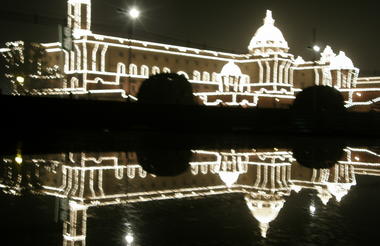
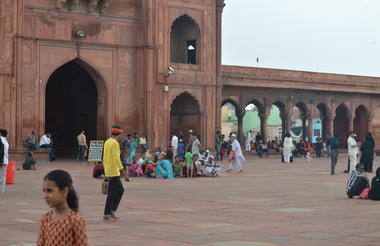
Following your breakfast, check out from your hotel and drive to Agra.
Agra was the capital of the Afghan King Sikandar Lodhi’s empire from 1501. It passed to the Mughal’s soon after and in 1526 Emperor Babar transformed Agra, giving it a unique character and beauty. A great patron of the arts, he made changes to the culture and life-style of his people, which in turn brought forth some of the finest craftsmen, artists, statesmen, warriors and nobility ever seen in this part of India.
Over the next few centuries Agra witnessed a rise in pomp and pageantry under the rule of three great Mughal monarchs – Emperors Akbar, Jehangir and Shah Jahan. All lavished their love and riches on this fabled city, making it one of the great centres of art, culture, learning and commerce.
Arrive Agra, check in at the hotel.
Later proceed to visit Agra Fort & Taj Mahal by sunset.
Agra Fort was built principally as a military establishment by Akbar in 1565. However, it was partially converted into a palace during Shah Jahan’s reign. Though Akbar built the original structure, his grandsons made many additions. This powerful fortress encompasses the imperial city of the Mughal rulers within its 2.5 kms enclosure walls.
Sunset Visit to Taj Mahal: The Taj Mahal was built by Shah Jahan between 1631 to 1653, in memory of his Queen, Mumtaz Mahal, to enshrine her mortal remains. This architectural marvel is a perfectly proportioned masterpiece fashioned from white marble and in-laid with precious and semi-precious stones. It stands testimony to the skill of some 20,000 craftsmen brought together from Persia, Turkey, France and Italy, who laboured for 22 years to complete this ‘Love Poem in Marble’. (closed on Fridays).
Overnight in Agra
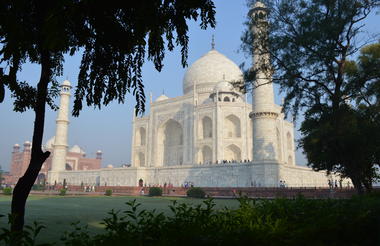
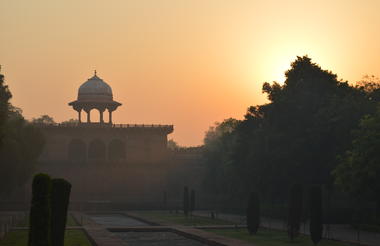
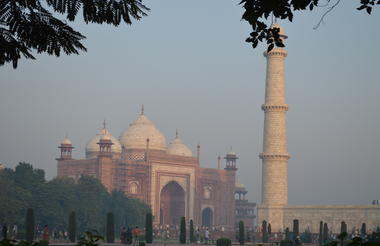
After breakfast, check out and drive to Ramathra, En-route visit to Fatehpur Sikri.
Fatehpur Sikri: Located 40 kms from Agra, it was built by Emperor Akbar in 1569, in honour of the great Saint Sheikh Salim Chisti, who blessed Akbar and prophesised the birth of a son, who later became Emperor Jehangir. It is in a superb and complete state of preservation, and within the walls are many palaces and the Jama Masjid. The main entrance is the 54m high Buland Darwaza, the Gate of Victory.
Later continue overland to Ramathra.
This 17th century fort was granted as a jagir in 1645 AD to Thakur Bhoj Pal by his father the Maharaja of Karauli. The Fort today belongs to Thakur Brijendra Rajpal and his family who are descendents of the founder. It is situated on a hilltop overlooking a 17 sq kms perennial lake called the Kalisil Lake. According to popular belief, this is a place where Lord Ram is supposed to have halted (perhaps enchanted by the peaceful and scenic surroundings) before proceeding further down south during his exile.
The unspoiled charm of the area is due to its geographic location. Although it is not far from populated towns but being situated in the interior, the peace and quiet as well as the environmental purity are undisturbed by urban influences. The atmosphere and its ambience are what visitors enjoy the most. The simplicity of the people dwelling in the sparsely populated villages is endearing and our guests enjoy the leisurely walks through the villages and their interactions with the village folk.
Arrive Ramathra, check in at your hotel & spend rest of the day at leisure.
You can enjoy the variety of activities available like boating, bird watching, a walking tour of Ramathra village, a nature walk, trekking to old fort ruins, temple trail etc.
Lunch & dinner at your hotel.
Overnight Ramathra Fort
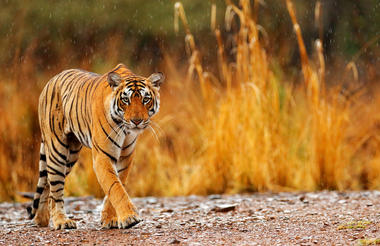
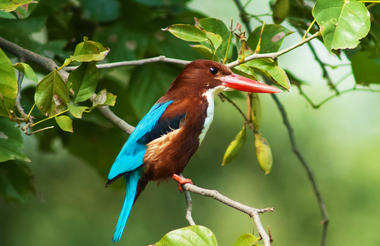
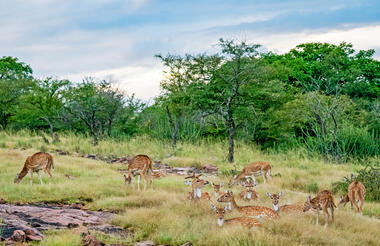
After an early breakfast, check out and drive to Ranthambhore.
Ranthambhore National Park encompasses nearly 400 sq km of dry deciduous forest. The park’s name derives from the fortress of Ranthambhore (built in 944 AD), which sits on a rocky outcrop in the forest. The forests around the fort were once the private hunting grounds of the Maharajas of Jaipur. In 1957 Ranthambhore was declared a wildlife sanctuary; in 1974 it came under the protective umbrella of Project Tiger and in 1981 became a National Park. Today it has some of the finest habitats in the world and is rich with diverse flora and fauna.
Arrive Ranthambhore, check in at lodge.
Afternoon you will proceed for Village Tour, which offers an insight into lives in rural India. On this tour you will get a chance to see a village, a school and a co-operative society.
Lunch & Dinner at the lodge.
Overnight in Ranthambhore
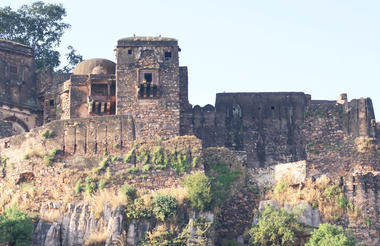
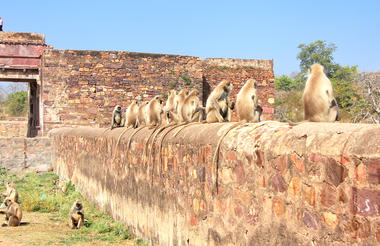
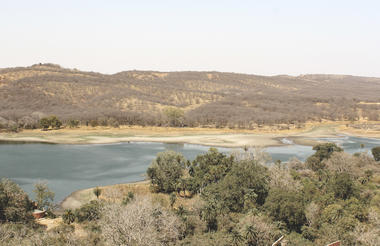
Following breakfast,
Later check out from your hotel & drive to Bhainsrorgarh.
Bhainsrorgarh is an impregnable fort, inhabited from at least the 2nd century BC. It is dramatically positioned between two rivers, the Chambal and Bamani. It had passed through the hands of several clans before becoming the seat of a premier noble of Mewar, the large region around Udaipur and Princely State of the Sisodia clan. There are temples to Devi Bhim Chauri, Shiva, and Ganesh and a palace that is for rent!
The present fort is around 260 years old and was built in the 1740s. Bhainsrorgarh fort has now been converted into a luxury heritage hotel run by the erstwhile royal family and is a very popular tourist spot for tourists from all around the world.
Arrive Bhainsrorgarh, check into your hotel & spend rest of the day at leisure to explore the fort and natural scenery.
Lunch and dinner at your hotel.
Overnight in Bhainsrorgarh



Morning River Cruise: Boating in the river in a comfortable country boat for about 1.15 hrs. This cruise is usually enjoyed in the early morning or in the evenings when there is more bird activity. Muggers (crocodiles) can also be seen basking in the sun on the shores or popping their heads out from the water while you are boating in the Chambal River. The boatmen will take you around the island in the Chambal and to a tributary of the Chambal called the Bamani River along the Fort wall which is partially submerged in water.
We can also serve you tea and coffee on board.
Breakfast, lunch and dinner at your hotel.
Sunset safari to a tribal village (duration: 2 hours):
Jeep drive to the tribal villages: Bhainsrorgarh’s proximity to the Chambal River has resulted in a picturesque landscape dotted with small villages. A ride through the countryside in an open four-by-four takes you through farms of wheat and mustard, typical villages under local governance and a tribal village which continues to live without electricity. The drive that takes you over half an hour from the fort finally ends near the village of Balapura that rests by the edge of a reservoir. Ideally timed before sunset, tea and biscuits are organized for guests while they take in the beauty and tranquility of a sunset in the countryside. Birds settle at the end of day whilst stealthy jungle cats get ready for their nocturnal prowls, the village temple bells and the hustle of evening chores all sounds for the guests to enjoy.
Overnight in Bhainsrorgarh



Post-breakfast, check out and drive to Udaipur.
Udaipur, the ‘City of Dreams’ also known as the Venice of the East, is interspersed with shimmering lakes, marble palaces and fountains. It is often referred to as the most romantic city in India. It was built in traditional Rajput style in 1559 A.D. by Maharana Udai Singh and was originally the capital of the State of Mewar. Its beautiful lake setting, graceful architecture, bustling bazaars and historical past make Udaipur rather special.
Arrive Udaipur check in at your hotel and spend rest of the day at leisure.
Overnight in Udaipur
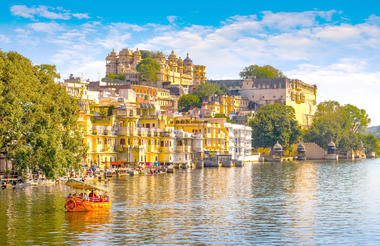
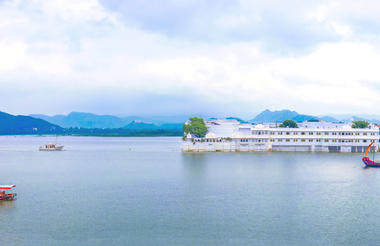
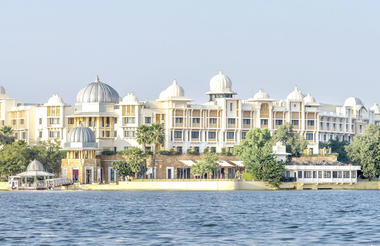
Breakfast at your hotel.
Morning city tour includes the City Palace & Museum, Jagdish Temple and the Sahelion ki Bari (Garden of the maids of honour).
The grand City Palace towers over the Pichola Lake. Maharana Uday Singh initiated its construction and succeeding Maharanas added several palaces to the complex but retained a surprising uniformity to the design. The main part of the palace is now a museum displaying a large and diverse array of artefacts, the Crystal Gallery having a breath-taking collection of crystal.
Jagdish Temple: The exterior and the plinth are covered with superb base reliefs of alligators, elephants, horsemen and celestial musicians rising in tiers. Chanting, bells and music can be heard throughout the day.
Sahelion Ki Bari: Known as the ‘Gardens of the Maids of Honour’, and built in the 18th century by Maharana Sangram Singh, these are delightful gardens and well worth visiting. The fountains of the Sahelion ki Bari function solely by water pressure with no pumps being used.
In the evening, enjoy an exclusive boat ride at Lake Pichola
An evening boat ride on Lake Pichola cruises the city waterfront, bathing Ghats, and out to Jag Mandir. Lake Pichola derives its name from Pichola Village, which was submerged when Maharana Udai Singh enlarged the lake after he founded the city.
Overnight in Udaipur
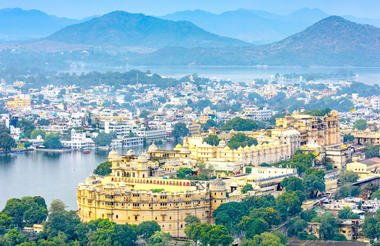
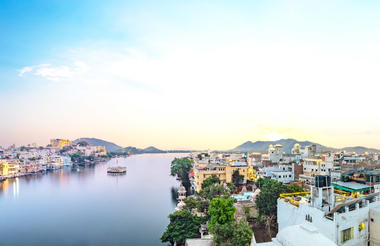
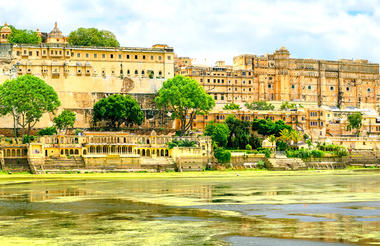



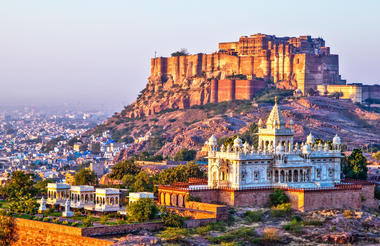
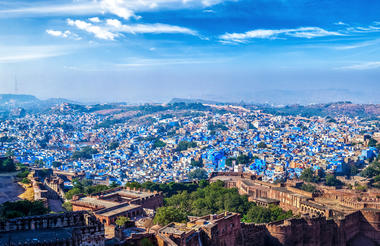
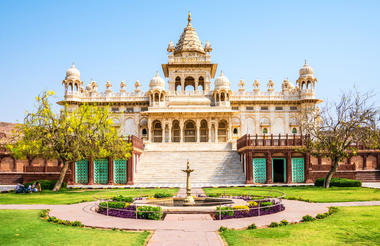
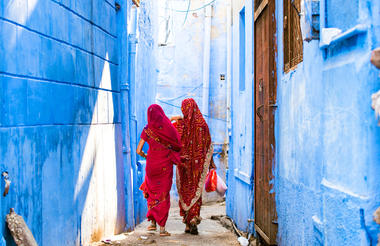
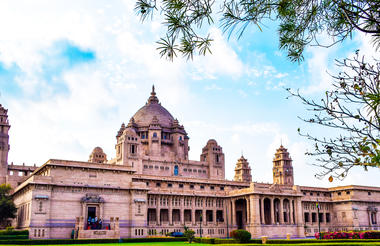
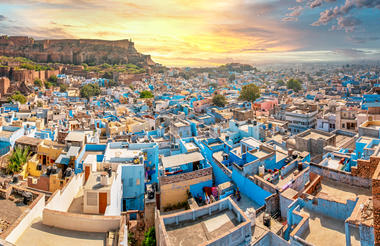
Following your breakfast, check out and make your way to Chhatra Sagar, Nimaj.
Rao Jodha Ji founded Jodhpur (Marwar) in 1453 A.D. His grandson, Rao Uda Ji, became a sovereign ruler of Nimaj and Jaitaran, and founded the sub clan popularly known as Udawat Rathores. Nimaj was later amalgamated with Jodhpur. This branch of the Rathore clan owns Nimaj Palace. The present Thakur is the 23rd generation of descent from Rao Jodha Ji. The Thakurs of Nimaj were one of the eight “Sirayats” of Marwar (Sirayats was the highest honour given to feudal lords for their bravery, and they formed the permanent advisory senate of privileged Thakurs).
Arrive Nimaj and check in at your luxury tent.
Chhatrasagar was built as a hunting lodge for the Nimaj Estate. It is situated on the one hundred year old reservoir. With a periphery of about 10 kilometers, it is an ideal destination for nature lovers.
It offers 11 well-appointed luxury tents. Each tent has its own private 'sit out' overlooking the lake, and all are comfortably furnished with fixed bathrooms with excellent water pressure and hot and cold water. The setting sun behind the Chhatrasagar Dam gives a golden glow to the lake before sinking behind the unique and rustic architecture.
Later you can enjoy activities like farm and village visits or a conducted bird watching tour.
The descendants of the people invited here by Thakur Chhatra Singh still live in settlements around Chhatra Sagar. Predominantly farmers and shepherds, they live a self-contained and harmonious life which has changed little in the last century. Chhatra Sagar continues to recharge their wells and provide water for their livestock.
Lunch and dinner at tent.
Overnight in Chhatra Sagar, Nimaj



Post-breakfast, check out from your hotel and drive to Jaipur.
Jaipur is the state capital of Rajasthan and owes its name, planning and foundation to the Maharaja Jai Singh II. In 1727 he decided to move from his hillside fortress at Amber to the plains, and thus Jaipur was conceived. It is also known as the “Pink City”, derived from the pink painted sandstone from which the buildings in the old walled city are constructed. The city is endowed with great architectural elegance and beauty, with magnificent historic palaces, temples, gardens, museums and an amazing observatory built by Jai Singh.
Arrive Jaipur, check in the hotel and spend your day at leisure.
Overnight in Jaipur
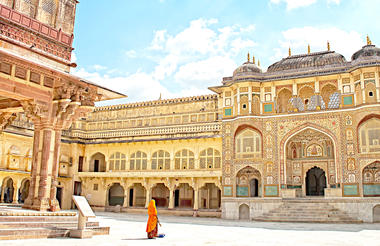


Breakfast at the hotel.
Full day sightseeing of Jaipur.
Morning, sightseeing of Amber Fort: Seven miles outside the city, in the rugged hills that surround Jaipur, is the magnificent Amber Fort. This Rajput Fortress/Palace was constructed from 1592 by Raja Man Singh II, and is a superb example of Rajput architecture. Within the Fort is Jai Mandir (Sheesh Mahal – Palace of Mirrors), renowned for its architectural designs using mirrors of varied shapes and sizes in the intricate design of its wall decoration.
Anokhi Museum: In the Amer Fort’s shadow and a ten minute walk through the cobbled streets of Amber, lies the Anokhi Museum of Hand Printing (AMHP).
Located in a magnificently restored haveli or mansion, the museum displays a varied selection of block printed textiles alongside images, tools and related objects – all chosen to provide an in-depth look at the complexity of this ancient tradition.
Afternoon, sightseeing of Jaipur City: A city tour takes you through the bazaars to the Maharaja’s City Palace. Part of it is now a fine museum with a comprehensive display of historic artefacts. A relatively small portion of the palace is still used by the Royal family of Jaipur.
Built in the style of a fortified campus, one of the palaces is the Hawa Mahal, known as the Palace of the Winds. Built in 1799 this five-story building looks out over the main street, and was originally for the ladies of the royal household to be able to watch life outside the cloistered Royal Residence.
Nearby is the Jantar Mantar, which has the largest stone and marble crafted observatory in the world. Built by Jai Singh in 1728, it is still equipped with its original ancient instruments including a very accurate 90-foot sundial. Many of them are still in working condition.
Overnight in Jaipur


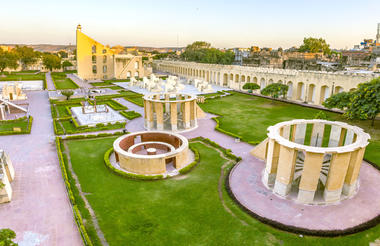
Breakfast at hotel.
Entire day is free to attend Jaipur Literature Festival (Tickets cost extra).
The past decade has seen the Festival grow into the world’s largest free event of its kind. Having hosted 1300 speakers and welcoming nearly 1.2 million book lovers, its success has been astonishing and heart-warming. Equity and democracy run through the Festival’s veins, placing some of the world’s greatest minds, humanitarians, historians, politicians, business leaders, sports people and entertainers from all walks of life together on stage. This free and egalitarian access to these renowned thinkers and writers is a powerful statement in a country where access to such individuals remains the privilege of a few.
The ZEE Jaipur Literature Festival provides a potentially life-changing opportunity for audiences from Rajasthan, across India and the world to learn from and exchange ideas with contemporary literary stalwarts.
Overnight in Jaipur
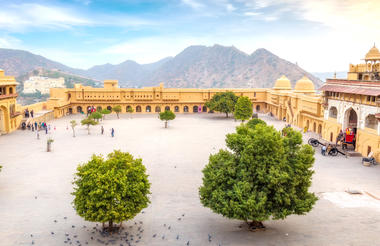


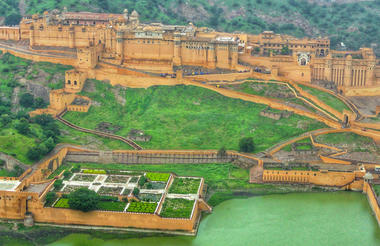


Breakfast at hotel.
Morning is free to attend Jaipur Literature Festival (Tickets cost extra).
Later check from your hotel and driven back to Delhi.
Arrive Delhi, check in at your hotel and spend rest of the day at leisure (No vehicle for local use).
Overnight in Delhi
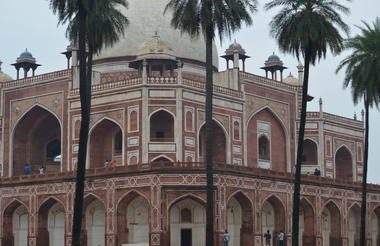
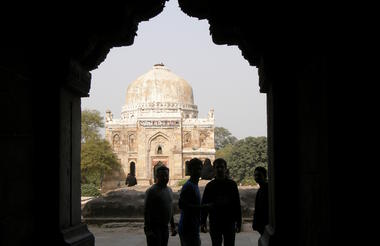
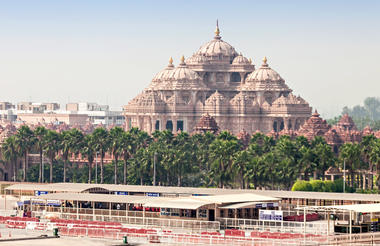
After an early breakfast, check out and you will be transferred to Delhi International Airport for your flight SQ-401, departing at 1210 hours for Singapore






